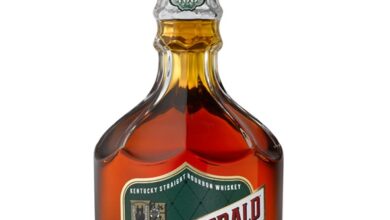About Whiskey Processing
By Richard Thomas
Just how many people think whiskey goes straight from the barrel and into the bottle amazes me, especially when the word “blended” is right there on the bottle! Most whiskey and certainly all mass-market whiskey, is processed in some way. This even applies to the more rarefied stuff, much to the confusion of the amateur whiskey-lover.
A frequent misconception is that “single barrel” whiskey isn’t processed. That connotation rules out one type of processing, blending, but leaves in all the others. “Cask strength” works in the same manner, since all that term means is that the whiskey hasn’t been cut with water prior to bottling. “Cask strength” does not automatically preclude other forms of processing. As a rule, never assume a given whiskey represents a straight-from-the-cask experience unless the whiskey-maker makes that specific claim.
Blending
Blending is a common practice in the liquor industry. Winemakers blend wine prior to bottling all the time, as do whiskey-makers. Indeed, blending has been raised to the level of art (or at least craft) by scotch-makers, since blended scotches can be the product of combining dozens of separate whiskies.
Usually the intent behind blending is to create a desired, consistent taste. However, it is sometimes the case that blending is also used to camouflage cheaper or inferior batches of whiskey. As a rule, unless the whiskey clearly indicates that it is a single barrel, assume it has been blended.
Caramel
A common additive, caramel is used to darken a whiskey’s color. In modern times, artificial caramel is used in place of the real thing, which is made from burnt sugar. In my opinion, the reason caramel is not used more widely or intensively, especially in D-grade whiskey, is because it changes the taste as well as the color. Put too much in, and the character of the whiskey is noticeably or radically altered. In most countries of origin, specifying caramel as an additive on the label is mandatory.
Cutting
Cutting is adding water to lower the alcohol content. Usually the water added comes from the same spring as the water originally used in mashing the whiskey. If your whiskey has an alcohol content in the lower 40s (40% or 43%), then it is almost certainly cut, as whiskey almost never leaves the barrel at such a low alcohol level. Even a number of the older single barrel, supposedly “cask strength” whiskeys have been cut a little, if only to achieve a consistent alcohol content throughout the brand.
Filtration
Chill filtration is a common processing step prior to bottling. This type of filtration pipes the whiskey through freezing temperatures the whiskey so oils will separate out of solution, and can thereby be filtered and removed. Leaving these oils in turns the whiskey temporarily cloudy whenever it gets cold. Some purists disdain chill filtration, but most experts do not believe it alters the flavor of the final product. If you want to see if your whiskey has been chill filtered, put it in the freezer for an hour. If the whiskey isn’t cloudy when you pull it back out, it’s been chill filtered.
Finishing
Finishing is a fairly common processing in scotch-making. After blending (or “marrying), the whiskey is put in a new set of barrels for several months of further aging. This is where old port, sherry, bourbon and even ale barrels play a major role scotch-making. However, the idea of finishing is starting to catch on in bourbon-making circles as well.



Furget that fancy processed stuff, I recommend organic, natural and pure catnip.
I would love to have a bottle!!! I live in Galveston Texas